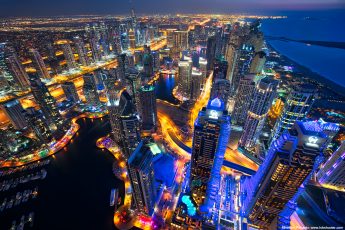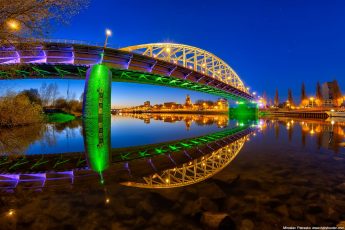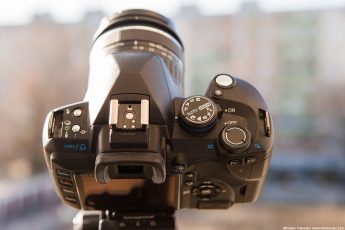All over the Internet you see reviews of the new Sony a7R II, but since I have the first one, today I will share with you some thoughts about that one. This is my first mirorless camera and most my observations are how it compares to the Canon 5D mark II, that I used before (and a bit to the Canon 450D I had before that). Also I still use Canon lenses with it, so I will stay away from the issue of slow focusing, as thats is hard to judge when using an adapter.
 So first, what’s my overall feeling after few months of use. Mixed. Thats how I would describe it. The a7R in my mind, is a pro level sensor, with a entry to medium level body and software. It’s like (in car terms) you would take an engine from a Ferrari and put in in a tiny Peugeot (or any other brand). This makes for some very nice photos, but very awkward usage and handling. But let’s go point by point.
So first, what’s my overall feeling after few months of use. Mixed. Thats how I would describe it. The a7R in my mind, is a pro level sensor, with a entry to medium level body and software. It’s like (in car terms) you would take an engine from a Ferrari and put in in a tiny Peugeot (or any other brand). This makes for some very nice photos, but very awkward usage and handling. But let’s go point by point.
Camera design
There are some really strange choices here, that I have no idea why Sony went with. From what I seen from the a7R II, they corrected some, but some are still there. Actually, quite in a few spots the a7R II look more like a pro level DSLR, so it’s easy to see where they took their inspiration.
- Horribly placed shutter button. If you take the camera into your hands, you will immediately place the index finger to the spot you think the shutter button should be, but it’s just not there (this is better on the a7R II, where it look exactly like on a DSLR :))
- Horribly placed menu and zoom buttons – this is a problem with quite a few buttons, they just don’t stand out enough, so they are harder to press quickly. Also this two especially are around the viewfinder, and it very easy to trigger the sensor that switches between the screen and the viewfinder and it’s so frustrating, when you press the menu button, for the screen to turn off for a second or two and than come back.
- Same problem with the aperture and time scrolling wheels, they just not so easy to use. Again, I see on the new one they stand much more out.
- The record button is pointless, you either press it accidentally or you use a remote instead.
- Not the most comfortable to hold, especially if you have bigger hands.
- Hard to control without looking. I took my 5D into my hands after months of not using it, and I can still change most settings without even looking at the camera. After few months with the a7R, I can change maybe 2-3. For all else, I have to look at the screen.
- Personally I also don’t like the camera strap attachments, as I don’t use a strap and they make a rattling sound, that I find annoying. But that’s really just a personal preference.
Performance
Next, let’s talk about the day to day performance of the camera.
- It can be painfully slow. The startup time is still OK, but the speed with which it works with photos is horrible. The camera just can’t handle the 36Mpix images. Just zoom in a photo and try to switch to the next one. The camera will get unresponsive for few seconds while it loads the other photo (btw. I use fast quality memory cards). Or you take a photo and want to see it immediately? You are greeted with a nice message “Writing to memory card”. I never ever seen a message like that on the 450D or the 5D. Why it can’t hold the last photo in memory for this case I don’t know. It’s better when you have the automatic preview enabled, but I had to turn it off, as when I do manual series, that slows down the work very noticeably.
- Battery performance is better than expected. I usually go out to take photos for 2-4 hours and most of the time, I managed to do a session like that, without having to change the battery. And one has to take into account, that I use manual focusing for all my photos, so the big screen is almost always on. So overall, I feared that I would have a much worse experience with it. But forget about having the camera, without buying the external charger. It charges slowly when in the camera and the camera is of course not usable at that time. The camera also does not use the power sparingly, with the screen being on during long exposures, when it’s completely pointless.
- The screen lags very noticeably. Especially, if you use a higher ISO, the screen refresh rate changes into a slideshow. This makes manual focusing a huge pain, as sometime, until the screen refreshes, you already missed the spot. I haven’t seen such an issue before, and it really is a shame.
- The screen looks great. It’s very high resolution and can be tilted easily. The photos look just wonderful on it.
Image quality
Ok, until now it was mostly about the negative points. So let’s look at a more positive side.
- The image quality is great. The resolution, the dynamic range, the ISO performance, are all much better than the 5D. This is all of course due to the great sensor inside that is a real power horse.
- Much better white balance on Auto. Where I could not use Auto white balance on the Canon, I have no problems with the Sony. The photos ten to be shifted a little bit towards green, but most of the time this is not noticeable (the 5D mark II likes to make a huge shift towards red when by artificial lights. )
- I feel that the sharpness is a little worse than on the 5D. But since I only use Canon lenses, this can be an issue with the Metabones adapter, not the camera itself.
- There are strange lens flares on the photos sometime, I haven’t seen before. Again, this can be an issue with the Metabones adapter, than the camera itself.
Software
If you go from a camera with Magic Lantern firmware to almost anything, it will look very bare bone. And it’s similar here.
- For my use, the options for bracketing are very limited. For 5 exposures, you can only get 0.7EV difference, which is not enough. And this is all just software, so the limitation is artificial.
- There is no easy way to do exposures longer than 30s. The bracketing is limited and the bulb mode only shows empty screen, instead of a timer. When I use my camera, I really hate using a second device to just be able to time it.
- Some options are combined into the same selection, which than limits them, as you can’t use both at once. Again the best example is self timer and bracketing. They are the same selection, so you can’t use both at once.
- Customization options are limited. For instance, there are three scroll wheels on the camera. I can switch the top two between aperture and time, but I can’t set any of those on the third one. That one can only do ISO. I would love to have time there, as its the one thats the can be scrolled the fastest, but no luck.
- Camera restarts randomly when I use the Canon 24-70mm f2.8 lens with it. I really have no idea what could cause this, as I haven’t noticed this problem with other lenses. At first I though that there is a problem with the lens contacts, but I found nothing.

Conclusion
As I said in the beginning of this article, my feelings on the Sony a7R are mixed. If the sensor wasn’t as good as it is, this would be quiet a disappointment. This sensor needs a better body, faster processor and much more memory. And for a camera in this price range, that should be a given. It looks like they corrected some of the issue with the a7R II, so I hope I get my hands on it so I can compare. For now, I’m not yet completely convinced about a mirrorless camera. They are the future, but maybe they need few generations more to be on par with the best DSLRS.









Thank you a lot for such a deep explanation! I just wondered is it worth to buy Sony Camera instead of 5D. Good ideas to think of
It’s worth it, but one has to get used to many limitations. If Canon licensed a Sony sensor for their next 5D, I would probably switch back in a second.
I am almost in the same situation as you are now, switching from 5D2 with ML ( you have a typo up there ) into A7 ( still thinking if I should pick up an used A7R instead ). Mainly shooting HDR and long exposures on landscape & architecture. ML has made me pampered thinking all camera should do the things it does, its pain to go back to a very young menu system.
I solved my big stopper long exposures using a modified smart trigger that has the timer on it, and also to point out that the Format function is on the last tab on the Menu, i think is 3rd page of the last tab.
Switching to the Alpha series really a love and hate affair, the main few main reasons i decided to temporary staying with the Alpha 7 is mainly due to its Sensor’s DR, Flip out LCD and lastly, a multi axis electronic leveling in the EVF. This has greatly helped me on using TS 24 and TS 17 in hand held shooting especially i am just doing street walking in cities or at places not allowing tripod.
Thanks for the corrections and I found the format so I removed that point.
And yes.. Magic lantern is just so great. I’m surprised that not a single camera company tried to bring them on board to create a really good camera software. It’s so hard to leave it behind. I especially hate the 30s limitation, that ML removed.
And you mention all the points I also like on the camera. DR is great, Flip out LCD is very helpful, and the leveling makes work easier (even if it’s sometime a little off).
Still I feel they need more refinement on the camera, and if they want to address the PRO sector with it, it needs more, much more.
no major company would accomodate the magic lantern approach, unless forced to do so. The superb functionality added to the camera by software extensions only obliterates improvements the company wants to use in a new camera model to make us want to buy new camera. I hoped sony would break this by their camera apps store, but is is only eyewash. Those apps avaliable are mostly trivial (maybe except time lapse) and the developement kit is not available for the public.
Have you ever tried any 3rd party software which allows you to control your camera remotely from a mobile device? I personally often use qdslrdashboard, which possess a nice set of features. The Android version of the application is even free and as far as I know it works with A7 too. One of the feature is, that it has a built-in bulb timer and it also has build-in custom bracketing functionality, which would also help you to overcome the limit of just 3 brackets on A7 you were complaining about in one of your older posts.
great information source for those Canonainas and Nikonians considering a SONY purchase, thanks
Many people like to focus just on the image quality, and while this camera excels in that, it lacks in many other points, so thats why I went more in that area :)
Very nice review Miroslav! I am thinking of getting a A7R II, would love if you could get to test the newest model and see if some of the negative points are fixed.
Will read more reviews to think it over, and wait some months to see if everything is ok (no technical problems, etc.). Just wish that Canon and Nikon (by the way, the D810 has a Sony sensor) would look more in the positive features of this line to work in a mirrorless line of full frame cameras…
Will see if I can get my hands on it. Hard to do it in Slovakia (shops don’t even stock such high end cameras here). But the most problems are in the ergonomics and software, so hopefully its better :)
Yeah.. I know about the d810, but I can’t use Canon lenses on it, thats why I went with a Sony. If Canon licensed the Sensor from the a7RII and put it in a 5D body for a reasonable price, I would buy it right away :)
I have Sony Nex 5N. The image quality from this small body is great, especially jpg files. But the main reason I think about to switch to DLSR camera is poor quality telezoom lens on 210 mm. Now i have big problem with choosing the proper system, becasue of great sensor from my little Nex :)
It’s so hard to choose. Canon has the best lenses (in my opinion), Sony has the best sensors and Nikon is somewhere between. There is not one that excels in everything.